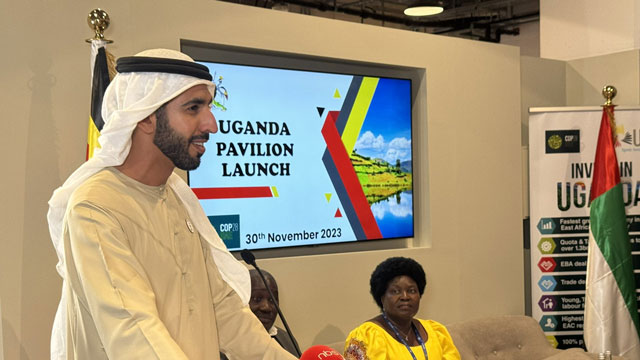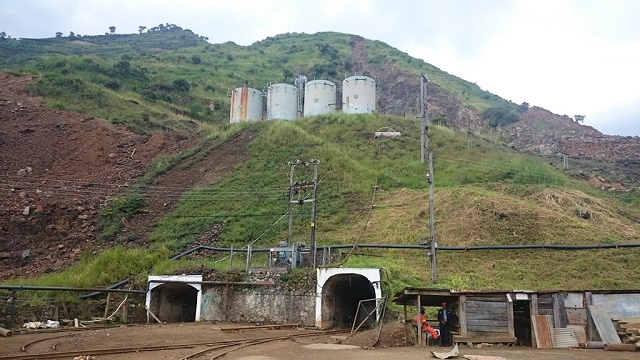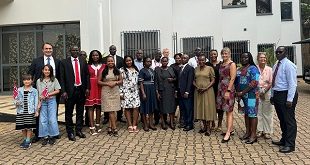
.
Dubai, UAE | THE INDEPENDENT | Minister of Energy Ruth Nankabirwa will on Monday launch Uganda’s energy transition strategy at the UN Climate Change Conference or COP28 taking place in Dubai.
This time around Uganda hired space for the Ugandan Pavilion at the Dubai Expo where Uganda is showcasing its renewable energy sources and the presence of yet untapped critical minerals.
Nankabirwa, who is representing the Prime Minister, Robinah Nabanja, said the opening of the pavilion is a symbol of the country’s readiness to lead climate change mitigation and adaptation efforts.
The pavilion includes officials in the minerals sector who are showcasing Uganda’s minerals, particularly the critical minerals, and its ambition for Vision 2040 where minerals are expected to play a key role in universal access to electricity or transitioning to a low carbon economy.
Transitioning to a low-carbon economy needs most of Uganda’s energy infrastructure to be rebuilt or changed. Fortunately, Uganda is endowed with some of the critical minerals that if mined and refined in-country will help it to go green by 2050 or earliest 2040.
Irene Bateebe, the Energy and Mineral Development Ministry’s Permanent Secretary has indicated minerals sub-sector will play a critical role in the country’s energy transition. “We will need these minerals in the different components of the energy infrastructure,” said Bateebe.
In the Energy Transition Strategy, Uganda has set out to promote and attract investments to exploit the critical minerals. These include lithium, cobalt, nickel, manganese, rare earth elements, platinum, and aluminum, among others.
The term critical minerals is used a lot when talking about the energy transition. Critical minerals are broadly defined as minerals that are of vital importance for technology, the economy and national security and are also subject to serious risks relating to the security of their supply.
The question is how Uganda can take advantage of those minerals for sustainable development. The energy sector is set to emerge as a major force in driving demand for critical minerals such as ore batteries, solar panels, and wind turbines. Electricity networks need a huge amount of copper and aluminum, with copper being the cornerstone of all electricity-related technologies.
According to Bateebe, the demand for most of those minerals is already on the increase and is expected to increase fourfold by 2050.
A core part of Uganda’s energy strategy transition from the minerals point of view is to ensure value-addition, exploration, production, and refining of the critical minerals.
“We have mapped out critical minerals in the different areas where we will continue to deploy critical minerals. So clean energy technologies require a wide range of metals” revealed Bateebe.
Some of the areas that Uganda intends to deploy its critical mineral include the manufacture of wind turbines that require minerals like rare earth elements, aluminum, and zinc.
Over 500 million tonnes of Rare Earth Elements (REEs) were discovered in Eastern Uganda by the Makuutu Rare Earth Project.
“We are already driving on the energy sector by development of supply chain to be able to manufacture these solar panel locally. But also the batteries and that will go a long way to support the value addition agenda that we are driving as government,” said Bateebe.

Part of Uganda’s economy was in the past supported by the mining of copper from Kilembe. Kilembe still has a rich deposit of copper. The mining and smelting of copper was Uganda’s fourth valuable export in the 60s.The value of copper in Uganda was equivalent to Tanzania’s diamonds.
Today, the entire mining sector contributes about 0.8%-1.4% of the country’s export earnings as opposed to 80% of the country’s export earnings in the 1950s and 1960s.
Kilembe was run by a Canadian mining company Falconbridge. In 1977, former President Idi Amin expelled the Canadians and nationalized the mine.
Copper is a hotcake in the international market. It is a vital component of technologies at the core of the energy transition trying to prevent runaway global warming. A report by S&P Global Market Intelligence projects that copper demand could outpace supply by around 50 million tonnes (Mt) per year by 2035.
That is twice as much copper as humankind used over the period 1900–2022. “Demand for copper is going to be greater than all other critical minerals combined by some estimate. So even though the prices of lithium and cobalt are higher than copper prices, copper will probably generate better values”
The World Bank projects the need for a 500 percent increase in graphite, cobalt, and lithium production by 2050. In 2022, one estimate claimed that approximately 700 million metric tons of copper would be needed over the next 22 years to reach sustainable economic growth targets—roughly the equivalent to what has been mined over the past 5,000 years of human history. It is estimated that copper demand could be worth 400-500 billion dollars in 2050.
“So even if an African country gets just a slice of that, that sort of amount could be transformational,” said Thomas Scurfield, an economic analyst at the Natural Resource Governance Institute NRGI.
Is it time to revive the copper sector in Uganda, what actions should we expect policy-makers to take now?
In the electricity sector, the Ministry of Energy still has significant work towards reaching Universal access by 2030. Reaching Universal access requires investment in transmission and distribution networks which require transformers and substations that will require copper and aluminum. Some players in the mining sector have suggested that in-country production of copper and aluminum wires could wire Uganda’s electricity to green energy.
One of the laudable policies that Uganda has taken in the past years is the ban on the export of raw minerals. Mining companies have asked for a reversal of this policy but President Museveni has stood his ground. Uganda also joined a range of other African countries that have reformed their mining laws.
Parliament passed the Mining and Mineral Act 2022. The law introduced a competitive licensing regime for brownfields (existing mining projects) and retained a first-come, first-served model for greenfields (new mining projects).
The Ministry of Energy is about to form a National Mining Company, more like the Uganda National Oil Company as per the new mining law.
The new mining law provides that the grant of a large-scale or medium-scale mining license may give the State an ownership interest, at no cost, of up to a maximum of fifteen per cent (15%).
Dr. Paul Jordan, one of the consultants behind the Africa Mining Vision has advised that a country like Uganda does not have to own to get a share of the rates.
“You can use taxes and we recommend the least distortionary tax. A tax on profitability rather than pure profit” We have also advised that part of the money from mining should be kept in an offshore fund to avoid the Dutch disease. They should invest in infrastructure” he said.
How fast should the minerals get out of the ground? Uganda, like other African countries, has to convince the world that it can supply the critical minerals to the energy transition in a stable way. It has been documented that the average time to get from discovery to production for a non-gold mine can be 16 years or longer for countries with low income.
“So whoever is investing in those minerals needs to show that it can get the minerals within time? Otherwise, there is a risk that investors will fear that they will miss the boom. And there is also a risk for minerals that have very few uses,” notes Scurfield
“So a country like Uganda should be taxing miners, supplying miners, and then making stuff from the metals,” Scurfield advised. He advised that to attract investors, developing countries need to embrace robust environmental, social, and governance standards that protect communities and the environment.
Similarly, Paul Bagabo, a policy analyst and program Lead with NRGI’s programs and strategies in Uganda has called for greater transparency in the mining sector. He observes that even if a country has abundant mineral reserves, weak governance and a lack of transparency can foil potential investment.
*****
This is the last part of the URN series on Uganda’s Energy transition strategy. The article explores the opportunities and challenges to developing Uganda’s mining and refining capabilities and offers some of the solutions to overcome them. In the first and second parts, we focused on oil and renewable energy resources like nuclear energy.
 The Independent Uganda: You get the Truth we Pay the Price
The Independent Uganda: You get the Truth we Pay the Price


